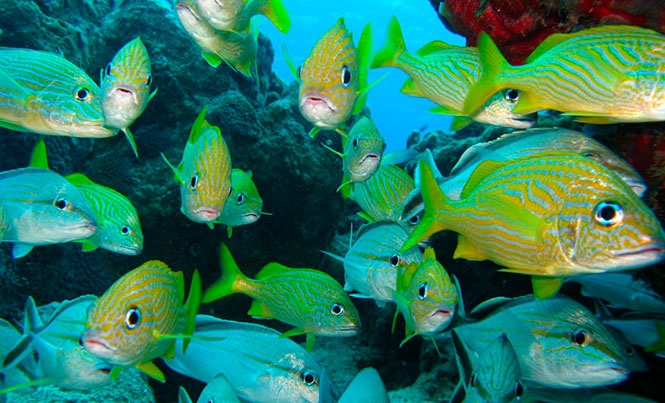
Most of us are now well aware that coral reefs are one of the most diverse and threatened ecosystems. Besides the beauty that all biologists see in coral reefs, they are also very important for human communities because they provide for many services like coastal protection, food through fisheries, and tourism, among others. The state of Quintana Roo has the northernmost tip of the second largest barrier reef in in the world- the Mesoamerican Reef (read about this reef) which covers Mexico, Guatemala, Belize, and Honduras. Some of the major services this reef has provided for in the communities of Q. Roo are fisheries and tourism, and both activities have had major negative impacts on this fragile ecosystem.
Fisheries have declined in the area most likely due to overfishing. Although this is not an isolated situation, the waning of fish available for food is linked to the elimination of mangroves (which are nurseries for many reef fish), and also to the damage on the coral reefs. Coral reefs have suffered considerably in this area due to uncontrolled urbanization where sewage waters end up in the ocean; due to the elimination of mangroves – which are also water filters (read about mangroves); and due to the fishery of herbivore fish (read about coral reefs and herbivore fish). These are all interconnected, and as a result, we find less healthy reefs and fewer fisheries.
Many strategies could be used to address these issues; none of them are simple, and all of them require effective collaboration. For example, the Kanan Kay Alliance is a local initiative that has built a multidisciplinary team of key stakeholders to design a network of fish refuges which currently covers about 10% of the state’s water, but aims to cover 20%. Developing effective patrolling and monitoring with the fishing communities, the initiative aims to protect key ecosystems which would eventually promote socio-economic development for local communities through the recovery of local fisheries.
“It is important to establish these refuge zones to protect fish resources and key ecosystems. However, it is not enough. Without implementation and patrolling, these areas end up as ‘paper parks’ which stops conservation and creates distrust among stakeholders and leads to major socio-economic conflicts,” says Inés López, technical coordinator of the Alliance.